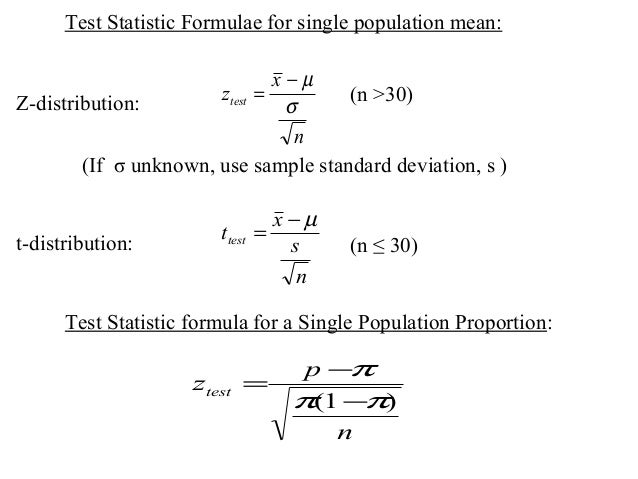

Thus, there is a statistically significant difference between sample mean and the population mean. Since the calculated T-value of 5.33 is much larger than the critical value of 1.75305, the null hypothesis can be rejected. The mean number of days spent on vacation by the persons in sample is found to be 9 days with a sample standard deviation is found to be 3 days.Īt a level of significance of 0.05, the T-value for a right-tailed test comes out to be 1.75305. Where, X̄ is the sample mean, μ is the hypothesized population mean, S is the standard deviation of the sample and n is the number of observations in the sample.Ī sample size of 16 persons is taken. We will use one-sample t-test to test this hypothesis. Null hypothesis, H0: There is no difference between the sample mean and the population mean What has occured with a sample is just an instance of chance occurrence.Īlternate hypothesis, Ha: There is a significant difference between the sample mean and the population mean. As a first step, we will formulate the null and alternate hypothesis.

Suppose a claim is made that the average number of days a person spends on vacation is more than or equal to 5 days (hypothesized population mean) based on a sample of 16 people whose mean came out to be 9 days. The t-test statistic (T) follows a t-distribution with n – 1 degrees of freedom, where n is the number of observations in the sample. The t-distribution is a family of curves that are symmetrical about the mean, and have increasing variability as the degrees of freedom increase. When working with T-test, T-distribution is used in place of the normal distribution.

Where, X̄ is the sample mean, μ is the hypothesized population mean, S is the standard deviation of the sample and n is the number of sample observations. A sample of size lesser than 30 observations is considered as a small sample. The distribution used is T-distribution with certain degrees of freedom. T-test is used for hypothesis testing of one-sample mean when the population standard deviation is unknown and the sample size is small. The t-test is used to determine whether the difference between the sample mean and the hypothesized value, e.g., the population mean is statistically significant or not. One-sample T-test is a statistical hypothesis testing technique in which the mean of a sample is tested against a hypothesized value, e.g., a population mean. T-score / T-statistics for Estimating Population Mean.


 0 kommentar(er)
0 kommentar(er)
